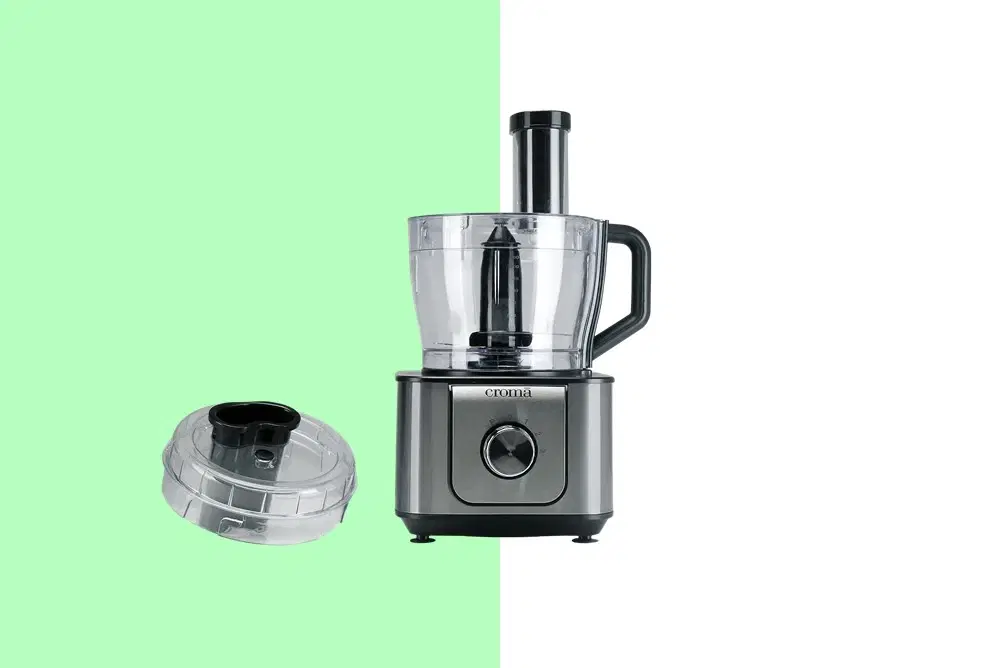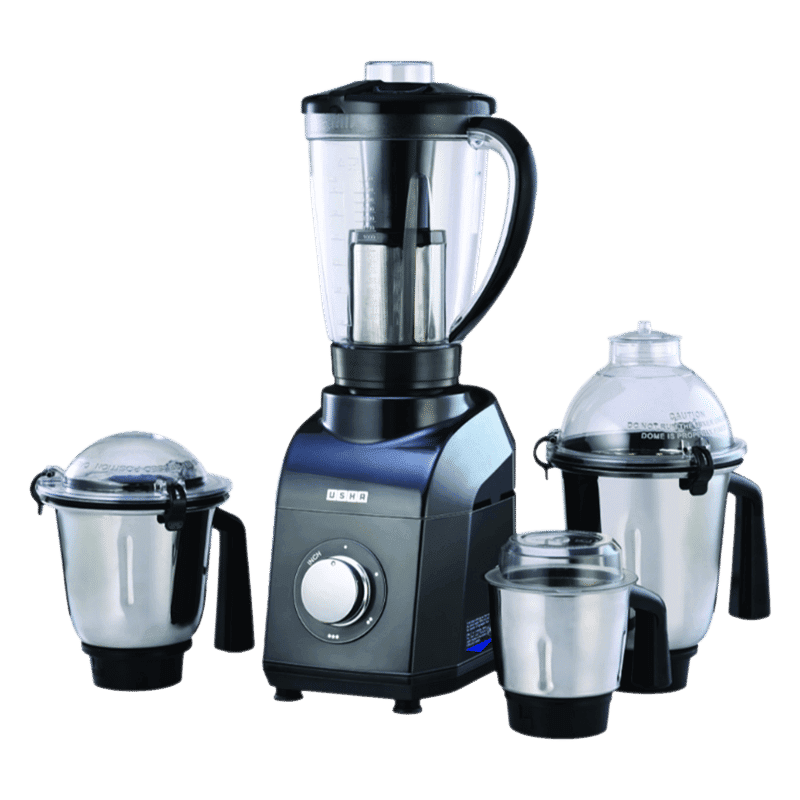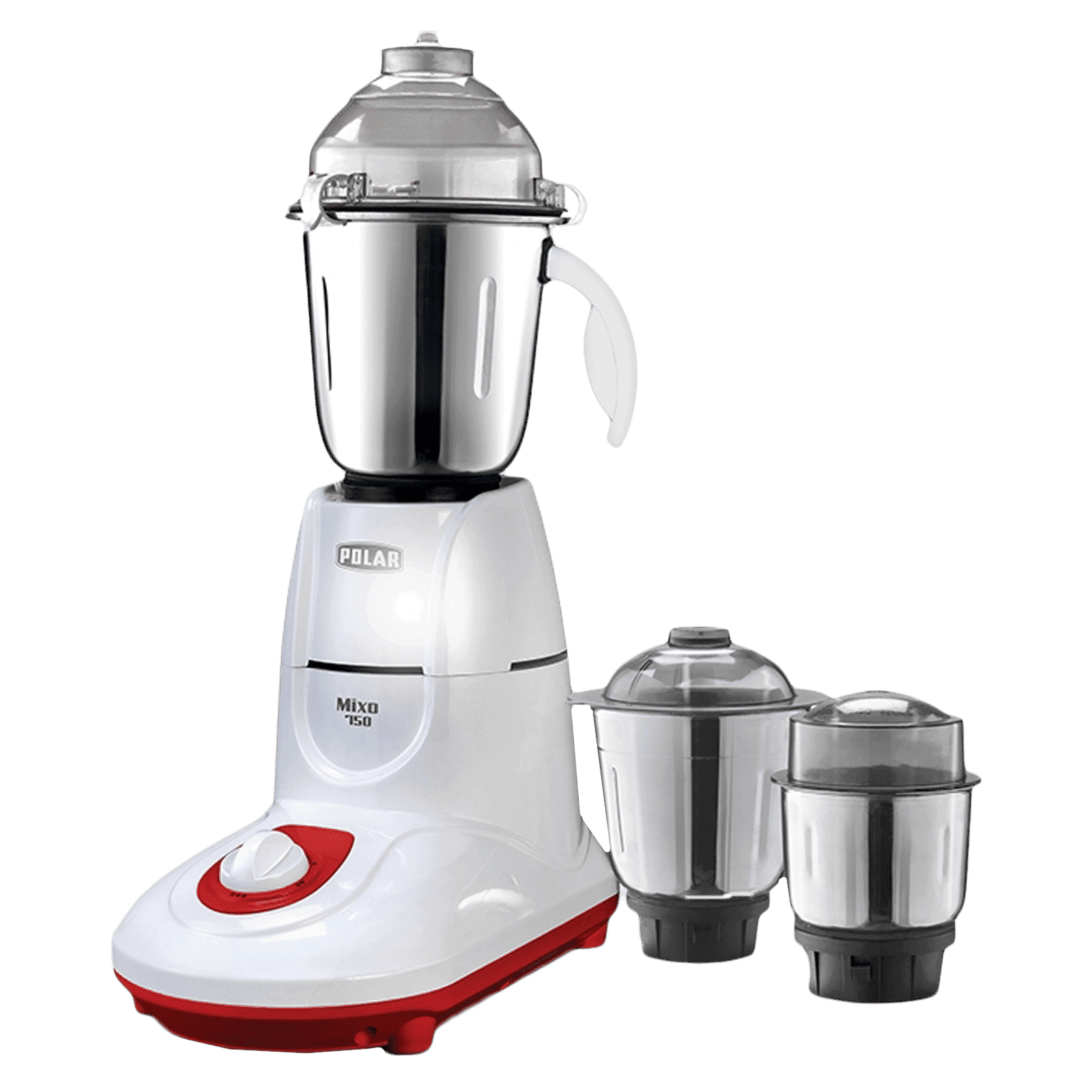
Home Appliances
•05 min read

Buy USHA TurboX 1200 Watt 4 Jars Mixer Grinder (3 Speed Setting, Dark Grey) online at best prices from Croma. Check product details, reviews & more. Shop now!
Imagine a kitchen where electricity isn’t a necessity yet you can create delicious sauces, smoothies, and salads with ease. In this guide we explore a world where innovation meets tradition by comparing a non electric hand blender and a manual food processor. Whether you’re a sustainability enthusiast, a frequent traveller who values portability, or simply in search of reliable kitchen tools, this article explains key features and benefits to help you choose the best option to suit your cooking style.
Non-electric kitchen tools are manually operated appliances designed to simplify meal preparation without the use of electricity. With a focus on eco-friendly living and energy conservation, these tools combine simplicity with functionality. From non electric hand blenders in various forms – including manual hand blenders, portable hand blenders, and hand whisk blenders – to manual food processors, these devices allow you to whip up recipes in a sustainable, efficient manner.
The rise of non-electric kitchen tools is closely linked with the growing demand for sustainable lifestyles. Home cooks and professionals alike appreciate tools that can help reduce energy consumption and lower your environmental impact. Today’s technology seamlessly blends with tradition to provide a versatile range of options. Such gadgets prove that innovation doesn’t always depend on electricity, making them an integral choice for urban kitchens and outdoor cooking scenarios.
A non electric hand blender is a compact, hand-powered device that helps you blend, whisk, beat, or mix ingredients without relying on electricity. Variations like the manual egg beater or eco friendly hand blender provide versatile options suitable for small culinary tasks. Their hand-powered design means they’re perfect for creating smooth sauces, well-beaten egg mixtures, or simply mixing salad dressings.
This eco-friendly hand blender is typically lightweight, compact, and cordless, making it incredibly easy to store and carry. Designed for simple tasks, it supports multiple functions such as blending, whisking, and beating. Crafted with portability in mind, many users appreciate how a portable hand blender can be used during travel or outdoor cooking adventures, ensuring you’re never left without your essential kitchen companion.
The non electric hand blender is ideal for small tasks like mixing sauces, beating eggs, or prepping dressings. Its ease of use and simple design make cleaning and storage hassle-free, all while maintaining a minimal environmental footprint. Whether you prefer a streamlined manual hand blender or a dedicated hand-powered blender, these tools offer a practical solution for those seeking functionality without the reliance on power outlets.
A manual food processor operates entirely by hand and is built for versatility and reliable performance. Characterised by its larger capacity compared to typical hand blenders, this tool is perfect for chopping, slicing, and mixing a wider range of ingredients. Its sturdy design ensures that it handles more demanding food preparation tasks with ease.

Buy Philips 1000 Watt 4 Jars Juicer Mixer Grinder (22000 RPM, Rotary Knob Control, Black/White) online at best prices from Croma. Check product details, reviews & more. Shop now!
Compared to the non electric hand blender, a manual food processor typically features a larger capacity and multi-functional capabilities. Equipped to chop vegetables, slice fruits, and mix ingredients for batch cooking, its robust construction stands up to more rigorous culinary challenges. Its design caters to busy kitchens, enabling you to prepare larger meals without stress.
The manual food processor is particularly effective for preparing larger meals or batch cooking. Its design allows you to process substantial quantities of ingredients quickly – an asset when working with vegetables or dough. This tool suits those who lean towards meal prep and want to maintain an eco-friendly kitchen without depending on electricity. With a manual food processor, you can effortlessly reduce cooking time while contributing to sustainable living.
Using a non electric hand blender generally requires less physical effort compared to a manual food processor, making it an excellent option for quick, light tasks. The hand-powered blender shines in situations where just whisking or beating ingredients is enough. In contrast, the manual food processor may demand more strength and time to achieve the desired outcome when performing tasks like chopping or slicing, but it compensates with its ability to handle larger volumes.
Both tools offer different sets of functions. The non electric hand blender is tailored for mixing, whisking, and beating, which can be ideal for making sauces, smoothies, or even delicate batters. Conversely, the manual food processor provides versatility for chopping vegetables, slicing fruits, and mixing dough. This makes it a suitable choice for extensive meal preps and recipes that require varied textures.
Portability is one of the non electric hand blender’s greatest advantages. Due to its compact, lightweight design, it is perfect for travellers or for use in small kitchens. In contrast, while the manual food processor usually offers a larger capacity, its size may not make it as practical for on-the-go use. Thus, if storage space is limited or you need a tool for outdoor cooking, the hand blender stands out as the convenient choice.
Both tools carry the appeal of being eco-friendly kitchen tools. With no reliance on electricity, each appliance minimizes energy consumption and helps reduce your carbon footprint. Whether you opt for the non electric hand blender or the manual food processor, you are making a conscious effort towards a greener, more sustainable kitchen.
Did You Know?
Non electric kitchen tools not only conserve energy by eliminating the need for electricity, they also significantly reduce your carbon footprint. Choosing either a non electric hand blender or a manual food processor is a smart step towards more sustainable living.

Buy POLAR MIXO 750 Watt 3 Jars Mixer Grinder (Shock Proof Body, White) online at best prices from Croma. Check product details, reviews & more. Shop now!
Before deciding which tool will best fit your kitchen, consider a few factors: your cooking style, the frequency of meal preparation, and the type of recipes you typically create. If you often find yourself preparing quick dishes or small servings, the non electric hand blender could be the optimal choice. On the other hand, if you enjoy preparing meals in large quantities or experimenting with complex recipes, the manual food processor might be better suited to your needs.
For those with limited kitchen space or who require a tool to assist in minimal cooking tasks, the non electric hand blender is an excellent match. Its compact size, ease of use, and portability make it perfect not just for home kitchens but also for outdoor cooking or travel scenarios. If your culinary requirements demand handling large volumes and more demanding tasks, then a manual food processor will serve you well by streamlining chopping, slicing, and mixing activities.
By carefully evaluating these elements, you can make a well-informed decision. Embrace the convenience and sustainability of non electric kitchen tools while enjoying benefits that extend from everyday cooking to creative culinary experiments. Each option offers advantages that can improve your cooking experience while also aligning with an eco-conscious lifestyle.
As you explore various non electric kitchen tools, remember that innovation means blending the benefits of simplicity with modern demands. Enjoy greater control in your cooking with tools that not only perform but also contribute to a greener planet. The charm of a non electric hand blender is in its agility and effortless performance, whereas a manual food processor stands out with its robust and multipurpose functionality.
Whichever tool you choose, you are supporting a shift towards sustainable practices in your kitchen. With efficient design and eco-friendly features, you can relish a cooking experience that prioritises both efficiency and environmental responsibility. In a world that is rapidly shifting towards sustainable solutions, these tools empower you to cook smartly and thoughtfully.
Yes, non electric hand blenders function without electricity, making them a great portable and eco-friendly alternative for blending tasks.
Absolutely, manual hand blenders rely on hand-powered mechanisms and are designed to blend, whisk, or beat ingredients efficiently.
Definitely, cordless hand blenders are valued for their portability, ease of use, and sustainable design.
You can opt for a non electric hand blender or a manual food processor to tackle many kitchen tasks without the need for electrical power.
Through thoughtful selection and understanding of your needs, you can create a cooking environment that supports sustainability while delivering on efficiency and convenience. Embrace the future of kitchen innovation with tools that combine traditional design and modern-day functionality, making every step of meal prep a pleasure.